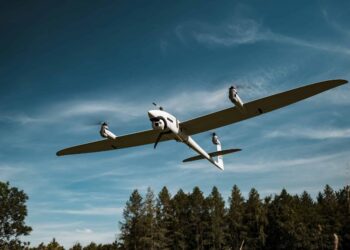, ARNOLD AIR FORCE BASE: The Dec. 15 initial flight of the new F-35 Lightning II Joint Strike Fighter, or JSF, came after more than six years of development and testing at Arnold Engineering Development Center here.
The flight of the conventional takeoff and landing F-35 variant began at 12:44 p.m. CST at Lockheed Martin in Fort Worth, Texas, when the jet lifted off and began a climb-out to 15,000 feet. The pilot then performed a series of maneuvers to test aircraft handling and the operation of the engine and subsystems before returning for a landing at 1:19 p.m CST. Two F 16s and an F/A-18 served as chase aircraft.
Center engineers have tested the new weapon system using various scenarios and flight conditions. The F135 engine and wind tunnel models of the aircraft have logged more than 10,000 hours in AEDC facilities, ensuring the F-35 was ready for its initial flight.
“We spent about $17 million on facilities upgrades,” Jeff Albro, AEDC's program manager for the Pratt & Whitney F135 turbine engine that powers the F-35 said. “Most of it was specifically and uniquely required for the JSF engine — things other legacy programs haven't had to have before. It's an evolution in the art of aircraft engines – more airflow, more thrust, go-faster type of things.”
Engine test program costs here, ranging from facility upgrades that began here in 2001, through Operational Capability Release, are nearly $200 million according to Albro.
“We've absolutely run the feet off the engine,” Mr. Albro said. “We have a life out there depending on us doing our jobs right. Before the F-35 pilot went up for the first time, we had to be able to look him straight in the eye and say, 'We are ready to put your life on the line to fly this. We know it works.' It really doesn't get much more personal than that.”
AEDC engineers finished qualification testing Aug. 2, on the Conventional Take Off and Landing (CTOL) variant of the next generation multi-role strike fighter, which flew the initial flight as the F-35A.
The Short Take Off and Vertical Landing, or STOVL, version, the F-35B, will be used by the Marines and the British Royal Navy. Finally, the F-35C is the carrier version, or CV, that will be used by the U.S. Navy.
“We've tested all three versions in the wind tunnels,” said Marc Skelley, senior F-35 project manager assigned to the 716th Test Squadron here. “There's not a lot of difference aerodynamically between the CTOL and STOVL versions. The CV has much larger wings for creating more lift necessary to land on a carrier deck.”
Although the aircraft has reached initial flight capability, Mr. Albro said the work is just beginning for AEDC engineers. For example, they are already preparing for Salt Spray Corrosion Testing for the Navy engines to look at suitability and survivability of the engine in an aircraft carrier environment.
“We take it in bite-sized chunks,” the 22-year veteran aerospace engineer explained. “It really is hallmark to emphasize Friday as 'initial flight' because we know we've got a lot more work to do before we can go to a full service release – before they can start putting the first squadrons together.
“We've certainly got a lot more work to do before the whole thing goes to OCR [Operational Capability Release]. We've gotten this far, but as a team, we have things to work on. Every step of the way, we're constantly working toward that final moment when we can say, 'It's 100 percent fully functional.'”
A new AEDC F-35 testing chapter is slated to begin in 2007 when the GE Rolls-Royce F136 engine, an alternative power plant, arrives in the spring.
From aerospace, aeronautical, mechanical and chemical engineers and technicians, to pipe fitters, boilermakers and sheet metal workers, to the machinists and plant operators, the AEDC team plays a vital role in national defense and enabling America's warfighters.
“We have, by far, some of the most talented people working here,” Mr. Albro said. “We make a team and this team does it together. We make a significant impact – an enabling impact. We're the people who enable those front-line fighters to be able to go out and do their jobs. We're not the ones facing the business end of a gun. We're the people who want to make sure our folks, our warfighters, have the best that's out there.”
AEDC engineers have been involved in the development of nearly every major aerospace weapon system since it's activation in 1951.
“We have been fortunate enough to have been a major player in the development of these systems to make sure that when they go out to the fleet, the warfighter, the person sitting in the seat, gets what he or she needs to accomplish the mission. Our mission in life is to support them. That's what we're all about.”
The United States and eight international partners are involved in the F-35's funding and development. The U.S. Air Force, Navy and Marine Corps, and the United Kingdom's Royal Air Force and Royal Navy plan to acquire a total of 2,581 F-35s. Italy, the Netherlands, Turkey, Canada, Australia, Denmark and Norway also are partners in the program and are expected to add about 700 more aircraft to the total. F-35 sales to other international customers could push the final number of aircraft to 4,500 or beyond.
Germany says adding explosive drones to weapons arsenal
Germany said Friday it would buy explosive drones for the first time as Berlin boosts investments in its armed forces...









